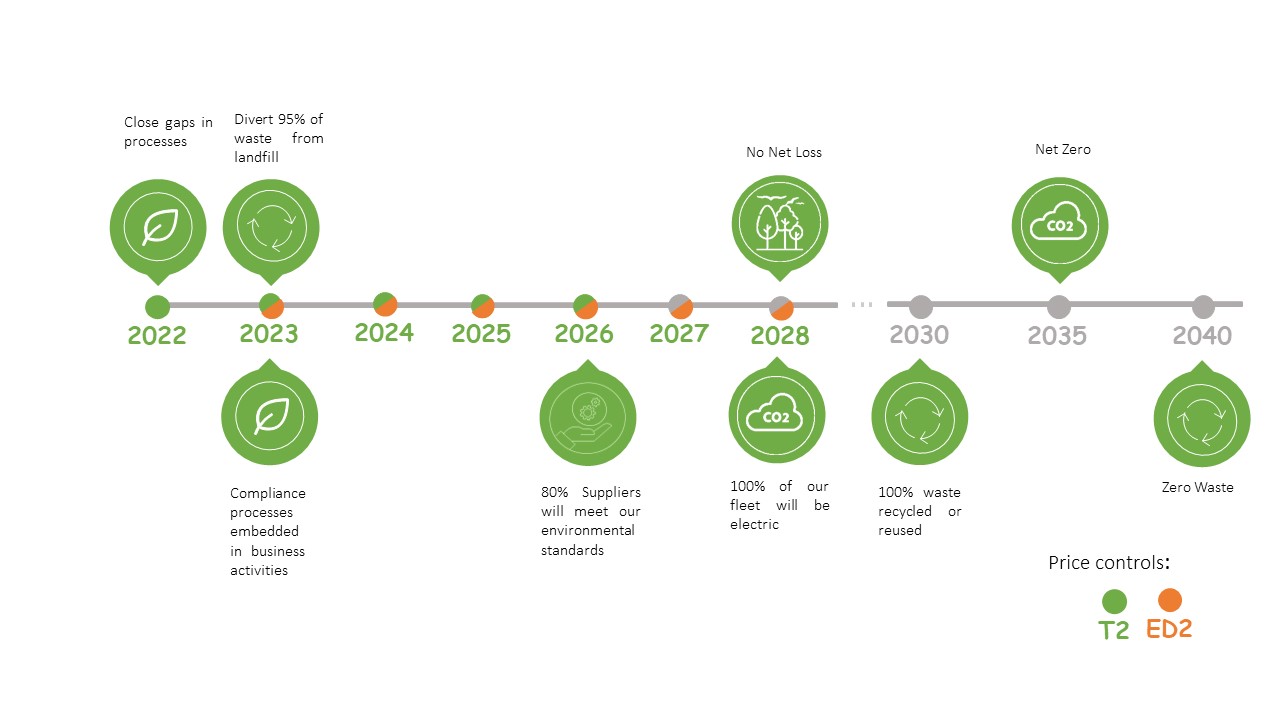In order to ensure we can reduce our emissions at the scale we need, we have developed a plan to reduce all our sources of direct and indirect greenhouse gas emissions. This includes direct emission (Scope 1), emissions associated with our energy use (Scope 2) and all other indirect emissions (Scope 3)

Controlling our direct emissions and energy use Direct emissions include all emissions which occur from sources that are controlled or owned by us. The majority of our direct emissions come from fuel used in vehicles and generators, and leakage of technical gases from our equipment. In order to reduce the carbon footprint of our direct emissions we are:
- Transitioning to 100% electric vehicles
- Implementing alternatives to diesel such as Hydrogenated Vegetable Oil (HVO)
- Reducing the leakage of technical gases like SF6, by fixing leaks and using environmentally friendly alternatives where possible
As a network operator we don’t just transport energy, we also consume energy to keep our systems and buildings operational. We are improving the energy efficiency of our buildings and depots, which will make our buildings more efficient and generate renewable power through solar panel installation. We are also ensuring the majority of the electricity we use is green electricity certified through Power Purchase Agreements (PPAs).
Reducing network losses (Scope 2)
Network losses include the total amount of energy lost as electricity flows through our cables and substations. Losses are physically unavoidable – and there will always be a proportion of energy lost when it is transported from power sources to homes and business. Furthermore, energy production has an associated carbon footprint – so it is important that we minimise network losses as much as possible, by ensuring our network is running as efficiently as possible.
As the size and complexity of our network increases, our losses are also expected to increase. However, the carbon footprint associated with energy is expected to go down as the UK continues to transition towards low carbon energy production. While we have little control over the decarbonisation of energy markets, we will ensure that we connect renewable energy sources to the grid as soon as possible – and we will continue developing the smart grid of the future, which will allow the decarbonisation of heat and transport.
Controlling our indirect emissions (Scope 3)
Indirect emissions are all emissions excluding energy use which occur as a result of our activities – but are outwith our direct control. This includes emissions associated with the manufacture of materials and equipment which we use to build our network. Building and maintaining our grid requires lots of resources and energy – and is supported by a global supply chain. It is important that we work with our supply chain to eliminate waste, find better, innovative, and more efficient ways to construct, and use more environmentally friendly, recycled building materials.
We are also taking actions to change the way we travel, encouraging our employees to use environmentally friendly forms of transport by:
- Supporting cycle to work schemes
- Supporting our employees with loans for public transport season passes
- Introducing grants and salary sacrifice for electric vehicles and charging points.
All this is helping to reduce the indirect impact we have on the environment and driving the change needed to reach Net Zero.